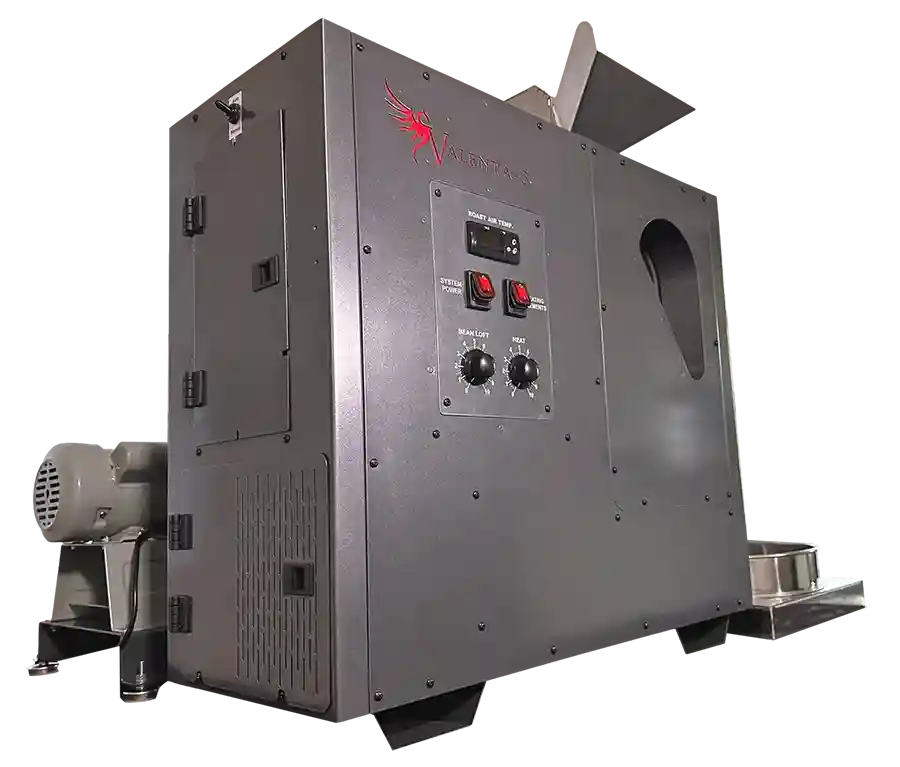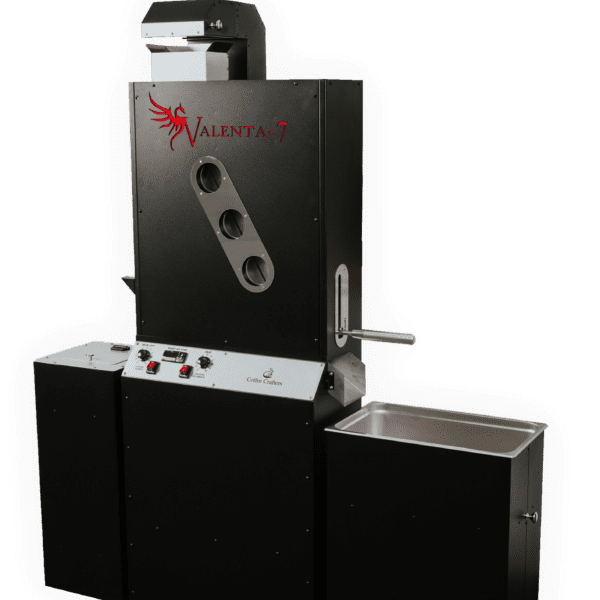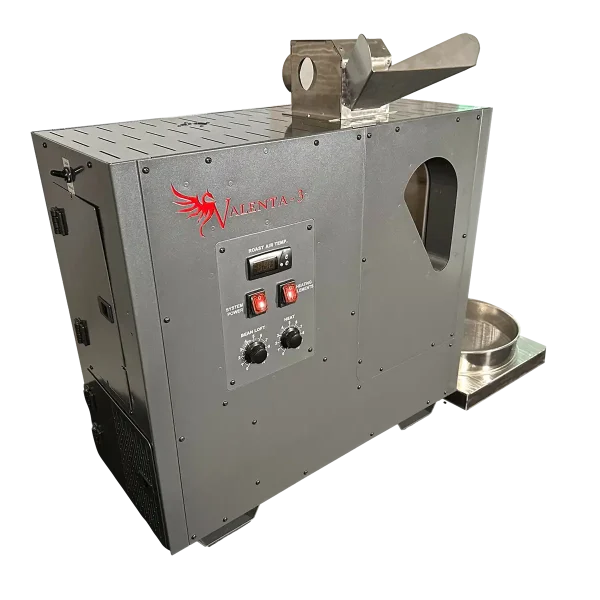Starting A Home Coffee Roasting Business In California
California has long been known for its entrepreneurial spirit, and with the state’s thriving food culture, it’s no surprise that the demand for artisanal products, including coffee, is on the rise. For coffee lovers, the opportunity to start a home-based coffee roasting business is an exciting and potentially lucrative venture. Thanks to California’s Cottage Food Laws, it’s easier than ever to start small and scale your coffee roasting business from the comfort of your home.
In this article, we’ll explore how you can take advantage of these laws to start your own coffee roasting business using the Valenta 3 Deluxe, along with important resources and tips for getting started.
Understanding California’s Cottage Food Laws
The first step to launching your home-based coffee roasting business is understanding California’s Cottage Food Laws. These laws allow individuals to prepare and sell certain food products from their homes without needing a commercial kitchen. Under these laws, coffee roasting falls under the category of “low-risk” food preparation, making it an ideal product for home-based businesses.
According to Forrager.com, the laws require you to obtain a Cottage Food Operator (CFO) license, which has two tiers:
- Class A: Allows direct sales only, such as at farmers’ markets or directly from home.
- Class B: Permits both direct and indirect sales, meaning you can also sell to local retailers, cafes, or restaurants.
Before starting, you’ll need to check with your county health department for specific permit requirements and any local regulations that may apply. Once you have your permit, you’re legally allowed to start roasting coffee at home and selling it to your customers.
For more information about California’s Cottage Food Laws, visit Forrager’s guide on California’s Cottage Food Laws.
Why Choose the Valenta 3 Deluxe?
Choosing the right equipment is critical for your home coffee roasting business. The Valenta 3 Deluxe, available through CoffeeCrafters, is designed to help small-scale coffee roasters produce high-quality batches efficiently. Here’s why it’s a great choice:
- Compact and Powerful: The Valenta 3 Deluxe offers professional-grade roasting capabilities in a compact size, making it ideal for home use.
- Precision Roasting: This roaster provides you with precise control over time and temperature, essential for creating consistent, high-quality roasts that cater to your customers’ preferences.
- Affordable for Startups: Starting a business requires an investment, but the Valenta 3 Deluxe is priced affordably for small businesses, allowing you to get started without breaking the bank.
Additionally, the Fill & Seal Package that comes with the Valenta 3 Deluxe ensures you can easily package your roasted coffee for sale. This feature adds a professional touch to your business, helping you stand out in a competitive market.
Sourcing Your Green Coffee Beans
The quality of your coffee beans directly influences the flavor of your roasts, so sourcing high-quality green coffee beans is key to your business success. Fortunately, there are many reputable sources for purchasing beans.
Coffeecraftersgreen.com is an excellent resource for purchasing green coffee beans. Whether you’re looking for single-origin beans or blends, they offer a variety of beans sourced from the world’s best coffee-growing regions. It’s essential to experiment with different beans to find the ones that work best with your roasting process and appeal to your target audience.
Packaging Your Roasted Coffee
Once you’ve roasted your coffee, you’ll need to package it in a way that preserves its freshness while appealing to customers. The Fill & Seal Package that comes with the Valenta 3 Deluxe is a great start, but you’ll also need high-quality coffee bags.
You can purchase professional-grade coffee bags from StockBagDepot.com. These bags come in various sizes and styles, including options with degassing valves that are crucial for keeping your coffee fresh and aromatic after roasting. A well-packaged product not only protects the quality of your coffee but also boosts your brand’s image.
Selling Your Coffee at Farmers Markets
Farmers markets are one of the best places to sell your freshly roasted coffee. The National Farmers Market Directoryprovides a comprehensive list of markets across California and the U.S., making it easy to find one near you. Visit NFMD.org to locate local farmers markets, and start building relationships with customers who appreciate artisanal, locally produced products.
Farmers markets are a great way to gain exposure and build a loyal customer base. You can provide free samples to attract customers and build brand awareness. Engaging with customers face-to-face allows you to share your passion for coffee and explain why your product stands out.
Marketing Your Coffee Roasting Business
A strong marketing strategy is essential for growing your home coffee roasting business. Here are some effective ways to market your business:
-
Social Media Marketing: Platforms like Instagram and Facebook are perfect for showcasing your roasting process, new products, and customer testimonials. Regularly posting high-quality photos and engaging with your followers will help build your brand.
-
Local SEO: Ensure your business is listed on Google My Business and other local directories. Optimizing for local search terms like “coffee roasters in [your city]” can drive traffic to your website and increase local sales.
-
Content Marketing: Share your knowledge and passion for coffee by creating blog posts or YouTube videos that educate customers on the coffee roasting process. This can help position you as an expert in your field.
For more in-depth marketing tips, check out the Coffee Crafters marketing series on YouTube, such as this video, which provides practical advice on how to market your coffee business effectively.
Scaling Your Business
As your business grows, you may want to expand beyond direct-to-consumer sales. The Cottage Food Laws allow for indirect sales, meaning you can sell to local cafes, restaurants, or grocery stores. Partnering with these establishments is a great way to increase your customer base without needing to expand your production capabilities significantly.
Another strategy for scaling your business is to explore online sales. Setting up an e-commerce website can give you access to a wider audience beyond your local community. The CoffeeCrafters eBook provides valuable insights on how to set up an online store, as well as tips on pricing, branding, and product presentation. You can download it here.
Learning from Others: Blue Marlin Coffee
Hearing from other coffee roasters who’ve walked the same path is invaluable. Blue Marlin Coffee, a successful coffee roasting business, shares their journey and tips for scaling a roasting operation in this video. Learning from their experiences can inspire you and provide actionable insights into how to overcome common challenges faced by new roasters.
Why Start Your Coffee Roasting Business Now?
Starting a home coffee roasting business in California today offers numerous advantages. The demand for artisanal, locally roasted coffee is growing, and with the Valenta 3 Deluxe, you have access to professional-grade roasting equipment right in your home. The ability to start small under the Cottage Food Laws gives you a low-risk entry into the market, while resources like the National Farmers Market Directory, Coffee Crafters Green Beans, and StockBagDepot ensure you have everything you need to succeed.
The potential for growth is significant. Whether selling at farmers markets, local cafes, or online, the opportunity to build a thriving coffee business is within reach.
Conclusion
Starting a home coffee roasting business in California has never been easier or more accessible. With the right equipment, like the Valenta 3 Deluxe, and a solid understanding of California’s Cottage Food Laws, you can quickly launch your business and start selling high-quality, freshly roasted coffee. Utilize the resources outlined here—from sourcing green beans to packaging and marketing—and you’ll be well on your way to success.





